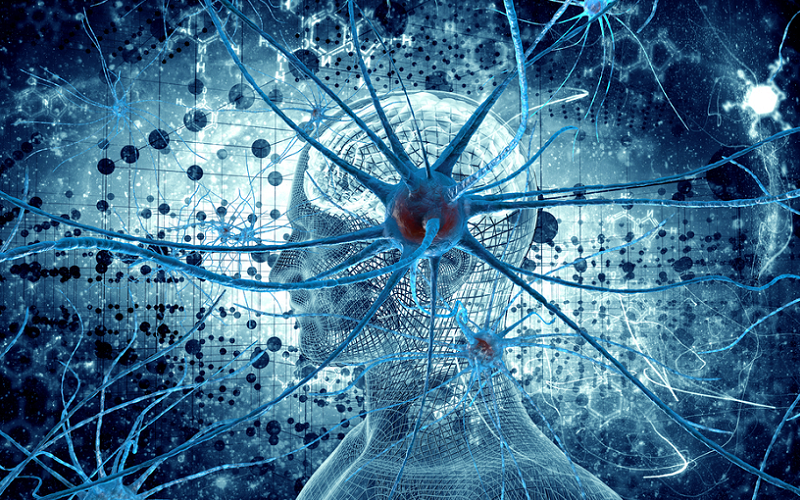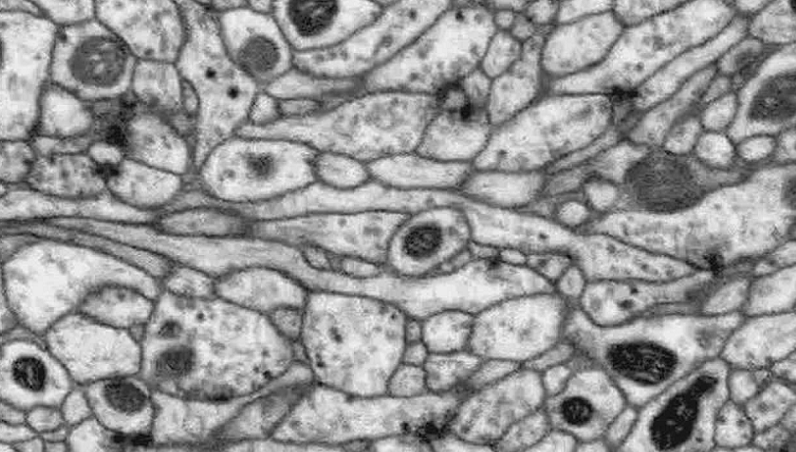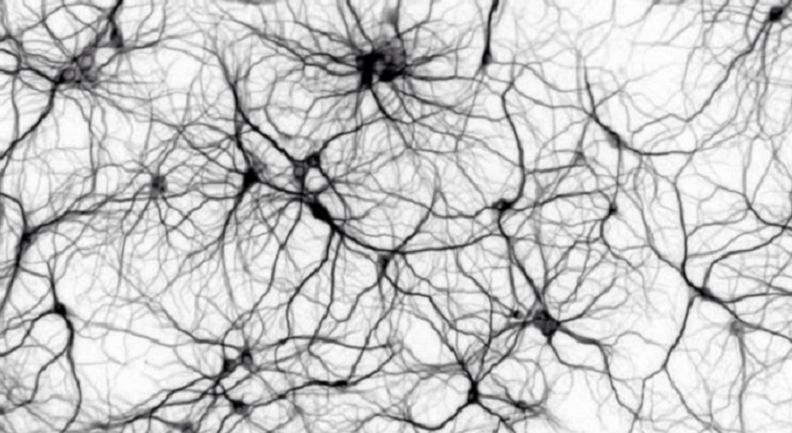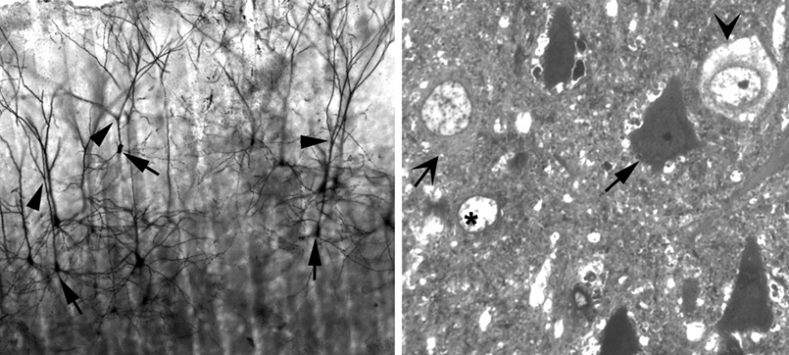
Neurons, the fundamental units of our brain, play a pivotal role in transmitting information and shaping our experiences, thoughts, and actions. They are the dynamic architects of our cognitive functions, connecting and communicating in intricate networks that make up the very essence of who we are. But what happens when these critical cells become unresponsive, losing their inherent vitality? Enter the world of “dark neurons” — neurons that have seemingly lost their spark.
Contents
- Introduction to Neuronal Activity
- What Are Dark Neurons?
- Causes of Neuronal “Darkening”
- Implications of Dark Neurons in Brain Function
- Detection and Study of Dark Neurons
- Potential Therapeutic Approaches to Dark Neurons
- References
Introduction to Neuronal Activity
The brain, often likened to an immensely intricate computer, holds the key to our memories, emotions, and cognitive abilities. At the very core of this complex organ lies the neuron, a single cell responsible for transmitting messages and playing a pivotal role in our daily functions. Without these tiny, powerful units, the very essence of our consciousness would be nonexistent. Yet, not all neurons maintain their vibrant, communicative nature throughout their lifetime. There’s a phenomenon, relatively less discussed, but profoundly impactful: the occurrence of “dark neurons.”
Definition of a Neuron
A neuron, commonly referred to as a nerve cell, is the basic building block of the nervous system. These specialized cells are designed to transmit information to other nerve cells, muscle, or gland cells. Neurons are unique in their ability to send information rapidly and efficiently through electrical and chemical signals. Comprising a cell body, dendrites, and an axon, neurons communicate through synapses, which are junctions where neurons connect with one another. The beauty of the neuron lies in its ability to process and transmit information, making it indispensable for our perception, thinking, and actions.
Importance of Neuronal Activity for Brain Function
Imagine a bustling city where every individual plays a unique role. Similarly, each neuron in our brain has a distinct function, and its activity contributes to the overarching performance of the brain. Neuronal activity is crucial for learning, memory, sensory perception, and motor functions. When neurons fire in synchrony, they enable us to process information, make decisions, and even feel emotions. Simply put, the more active our neurons are, the better our cognitive capabilities and overall brain health.
Brief Overview of “Dark Neurons”
In stark contrast to the vibrant, active neurons that dominate our brain’s landscape, there exist neurons that have become unreactive or “dark.” These neurons, although present, don’t seem to participate in the regular orchestra of brain activity. But what exactly are these dark neurons? Why do they transition to this state? And what does their existence imply for the health and functionality of our brain?
What Are Dark Neurons?
As we journey deeper into the neural landscape, it’s crucial to understand the concept of “dark neurons.” Unlike the lively neurons we’re familiar with, these particular cells seem to sit in the shadows of brain activity. Their mysterious nature has prompted significant intrigue and exploration among neuroscientists. Let’s uncover the facets of these elusive cells.
Historical Discovery and Context
The story of dark neurons begins with keen-eyed neuropathologists who, decades ago, first noticed certain neurons appearing darker under the microscope than their counterparts. These cells, initially believed to be artifacts or abnormalities resulting from the staining process, were later recognized as a genuine phenomenon. Over the years, their observation has become increasingly frequent, particularly in brains that have undergone trauma or disease [1].
Characteristics of Dark Neurons
Distinguishing between typical neurons and their darker counterparts isn’t solely about color. The differences run deeper, influencing their very structure and functionality.
Physical Appearance and Staining
As their name suggests, dark neurons manifest with a darker hue when observed under a microscope. This characteristic darkness is due to an increased affinity for silver staining, a technique used in neurohistology. Their cytoplasm appears more eosinophilic (i.e., pinkish-red under a standard stain), and their processes seem more condensed and pronounced.
Electrophysiological Properties
On an electrophysiological level, dark neurons exhibit altered properties. Their reduced responsiveness is often mirrored by changes in their electrical activities. In many cases, they show a reduced capacity to generate action potentials or, in simpler terms, reduced “neural firing.” This decreased activity signifies their limited participation in the neural network’s communication, thus rendering them “silent” in the grand cerebral concert.
Difference Between Dark Neurons and Healthy Neurons
In essence, while healthy neurons are dynamic, constantly transmitting and processing information, dark neurons seem subdued and detached. Beyond the evident color differences under the microscope, their functional disparities are of greater consequence. Where healthy neurons facilitate learning, memory, and perception, dark neurons often remain passive, failing to contribute significantly to these processes. Understanding this distinction is pivotal, not just for academic comprehension but for appreciating the potential implications of having an increased number of these dormant cells in our brains.

Causes of Neuronal “Darkening”
The existence of dark neurons inevitably raises the question: Why do some neurons deviate from their typical vibrant state, transitioning into this subdued, unreactive form? While the phenomenon of neuronal darkening is still under active investigation, scientists have pinpointed several contributing factors that may lead a neuron down this shadowed path. Unraveling the causes can provide valuable insights into both the prevention and potential treatment of this neural condition.
Traumatic Brain Injury
One of the earliest associations made with the emergence of dark neurons was their frequent observation in brains that had suffered trauma. Traumatic brain injuries, ranging from concussions to more severe injuries, can lead to cellular stress, inflammation, and even direct damage to neuronal structures.
Upon closer inspection, researchers have observed that physical traumas can cause alterations in the cellular environment, leading to ionic imbalances and oxidative stress. These disturbances, in turn, may push neurons into a darkened state, perhaps as a protective response or as a precursor to more severe damage.
Hypoxic Events (Lack of Oxygen)
The brain is an oxygen-thirsty organ, and any disruption in its oxygen supply can have immediate and severe repercussions. Hypoxic events, where parts of the brain receive less oxygen than needed, can arise from conditions like strokes, cardiac arrests, or even severe respiratory disorders [2].
During such events, neurons can undergo rapid changes. A prolonged lack of oxygen may cause them to alter their functionality, and some may transition into the darkened state. This reaction might be an attempt to conserve energy and resources in the face of a compromised environment.
Neurotoxins and Environmental Factors
Our modern world is fraught with chemicals, some of which have the potential to interfere with our neural functions. Exposure to certain neurotoxins, whether through environmental pollution, dietary sources, or specific occupational hazards, can lead to alterations in neuronal health.
Some toxins have been shown to interfere with neuronal signaling, disrupt ion balances, or even cause direct cellular damage. In such toxic environments, neurons might become dark as a response to injury or as an adaptive measure to minimize further harm.
Aging and Degenerative Diseases
Aging is a natural process that brings about various cellular changes. Over time, the cumulative effects of oxidative stress, minor injuries, and exposure to environmental factors can lead to the appearance of dark neurons. Furthermore, certain neurodegenerative diseases, like Alzheimer’s or Parkinson’s, are associated with neuronal loss and dysfunction.
In the context of these diseases, the presence of dark neurons might signify areas of the brain that are undergoing stress or degeneration. While not necessarily a direct cause, the correlation between age, degenerative diseases, and the presence of dark neurons warrants further investigation to elucidate their potential role in disease progression.

Implications of Dark Neurons in Brain Function
With the understanding of what dark neurons are and what might cause their emergence, an equally pressing question arises: What impact do these silent, unresponsive cells have on the overall functionality of our brain? Are they simply benign bystanders, or do they play a more active role in shaping our cognitive health?
Impact on Cognitive Functions
While individual neurons are microscopic entities, their collective function lays the foundation for our cognitive abilities. Thus, even a slight disruption or alteration in neuronal communication can lead to noticeable changes in our mental capacities.
Memory Impairment
Memory formation and retrieval are processes that depend heavily on the active and synchronized firing of neurons. Dark neurons, given their unresponsive nature, might contribute to memory lapses or difficulties in recalling information. Areas of the brain like the hippocampus, which are pivotal for memory, could be particularly vulnerable to the effects of dark neuron accumulation.
Decline in Processing Speed
Cognitive processing speed, the rate at which we absorb, process, and respond to information, is another area potentially impacted by the presence of dark neurons. A network filled with non-participatory neurons could lead to slower reaction times and diminished quick-thinking capabilities [3].
Disruption in Emotional Regulation
Emotions aren’t just fleeting feelings; they’re rooted in the intricate neuronal connections of our brain. Regions like the amygdala and prefrontal cortex play significant roles in regulating our emotions. An abundance of dark neurons in these areas could lead to mood fluctuations, emotional numbness, or even heightened emotional reactions.
Effects on Neural Connectivity
Neural plasticity, the brain’s ability to form and reorganize synaptic connections, is fundamental for learning and adapting to new experiences. Dark neurons, being less active, could potentially hinder this adaptability. Over time, if a significant proportion of neurons become unresponsive, the overall connectivity and robustness of neural networks might diminish, leading to a less flexible and adaptive brain.
Potential Role in Neurodegenerative Diseases
The presence of dark neurons in the brains of individuals with neurodegenerative diseases is more than a mere coincidence. While they might not be the direct cause of these conditions, they certainly seem to be associated with the neural degradation observed in diseases like Alzheimer’s and Parkinson’s.
Alzheimer’s Disease
In Alzheimer’s, along with hallmark plaques and tangles, there’s a pronounced neuronal loss. The presence of dark neurons might signify areas under stress or undergoing degenerative changes, potentially offering a clue about the disease’s progression or even its early detection.
Parkinson’s Disease
Parkinson’s primarily affects the dopaminergic neurons in the substantia nigra. The occurrence of dark neurons in this region could provide insights into the disease’s pathology, hinting at potential areas of dysfunction or vulnerability.
Other Degenerative Conditions
While Alzheimer’s and Parkinson’s are among the most studied in relation to dark neurons, other neurodegenerative conditions might also feature these silent cells. Their role in such diseases, whether as indicators or contributors, is a vital avenue for further research.

Detection and Study of Dark Neurons
With the significance of dark neurons established in the broader context of brain health and function, there emerges a pressing need to accurately detect, study, and further our understanding of these cells. Over the years, research methodologies have evolved, granting scientists sophisticated tools and techniques to explore deeper into the world of dark neurons.
Histological Techniques
At the foundation of studying dark neurons lies histology—the microscopic study of tissue structure. Given that dark neurons are often first identified by their distinct appearance under the microscope, histological techniques remain indispensable [4].
Silver Staining
Traditionally, silver staining has been a valuable method for highlighting dark neurons. As previously mentioned, these neurons demonstrate a pronounced affinity for silver-based dyes, making them stand out distinctly against their counterparts.
Fluorescent Labeling
In more recent times, fluorescent labeling has allowed for a more nuanced study of dark neurons. By tagging certain proteins or cellular components with fluorescent markers, researchers can observe not just the neuron itself, but also its interactions and connections within the neural network.
Advanced Microscopy
Beyond traditional microscopy, advances like confocal and electron microscopy provide detailed, three-dimensional visuals of neurons, granting a clearer understanding of the structural changes that accompany the darkening process.
Electrophysiological Approaches
Peering beyond the physical structure, understanding the functional aspects of dark neurons requires an exploration of their electrophysiological properties.
Patch-Clamp Technique
A mainstay in neural research, the patch-clamp technique allows researchers to study the electrical activity of individual neurons. By attaching a micropipette to the cell’s surface, one can measure its voltage and current, providing insights into the neuron’s responsiveness and signaling capabilities.
Multi-Electrode Arrays
For a broader view, multi-electrode arrays enable the simultaneous recording of electrical activities from multiple neurons. This approach can help elucidate the collective behavior of neuronal populations, determining how dark neurons influence or are influenced by their surroundings.
Molecular and Genetic Investigations
Given the multifaceted nature of dark neurons, it’s pivotal to delve into their molecular and genetic aspects. These investigations can unearth the underlying mechanisms that lead to neuronal darkening and even potential therapeutic targets.
Gene Expression Profiling
By analyzing the genes expressed in dark neurons, researchers can discern the cellular pathways that are active or suppressed. This genetic “fingerprint” can help pinpoint the factors contributing to a neuron’s transition into the dark state.
Proteomic Analysis
Beyond genes, the proteins present within dark neurons can shed light on their functionality. Proteomic approaches, which catalog and quantify the proteins within cells, can reveal the biochemical processes at play.
Imaging Techniques
In living brains, non-invasive imaging techniques offer a window into the presence and distribution of dark neurons. Tools like MRI (Magnetic Resonance Imaging) or PET (Positron Emission Tomography) scans can potentially highlight areas of decreased activity or altered metabolism, hinting at regions populated by these unresponsive cells.
Potential Therapeutic Approaches to Dark Neurons
Given the potential implications of dark neurons on cognitive function and their association with neurodegenerative diseases, it becomes paramount to explore therapeutic approaches that might counteract their effects or even restore their functionality. While the field is still in its nascent stages, preliminary research has shed light on some promising interventions. These potential solutions underscore the importance of understanding dark neurons, not just as passive bystanders but as active targets for clinical interventions.
Neuroprotective Agents
One of the foremost strategies in managing neuronal health is the use of neuroprotective agents—compounds designed to shield neurons from injury and enhance their survival [5].
Antioxidants
Oxidative stress has been recognized as a significant factor in neuronal damage. Antioxidants, by counteracting the detrimental effects of free radicals, can potentially protect neurons from entering the darkened state, especially when the cause is environmental toxins or hypoxia.
Anti-inflammatory Compounds
Inflammation is another culprit behind neuronal distress. Drugs and compounds that mitigate inflammation might provide a safeguard against the transition of healthy neurons into the unresponsive dark state.
Neural Stimulation Techniques
Reviving the functionality of dark neurons may require direct interventions. Stimulating these cells to re-enter the active neural network can be achieved through various techniques.
Deep Brain Stimulation (DBS)
DBS involves implanting electrodes within specific brain regions and delivering electrical impulses. By targeting areas with a high concentration of dark neurons, DBS might coax them back into activity, restoring their participation in neural communication.
Transcranial Magnetic Stimulation (TMS)
TMS offers a non-invasive approach to neural stimulation. By applying magnetic fields to the brain’s exterior, it can influence neural activity within, potentially revitalizing dark neurons.
Cellular and Molecular Interventions
On a more intricate level, intervening directly with the cellular and molecular machinery of dark neurons could offer tailored therapeutic solutions.
Gene Therapy
If genetic anomalies are at the root of a neuron’s darkening, gene therapy might provide a remedy. By introducing, removing, or altering genetic material within neurons, it’s possible to modify their function and potentially revert the darkening process.
Growth Factors
Neurotrophic factors, like BDNF (Brain-Derived Neurotrophic Factor), play a vital role in neuronal health and plasticity. Introducing these growth factors might rejuvenate dark neurons, promoting their health and reintegration into the neural network.
Lifestyle and Holistic Interventions
Beyond direct medical interventions, certain lifestyle choices and holistic approaches might have a beneficial impact on dark neurons.
Cognitive Training and Brain Games
Engaging in activities that stimulate the brain, like puzzles, memory games, or learning new skills, can potentially enhance neural plasticity and reawaken dormant neurons.
Mindfulness and Meditation
Mindfulness practices and meditation have been shown to influence brain structure and function. Regular practice might help in maintaining a healthy neural environment, reducing the chances of neuronal darkening.
Physical Activity
Exercise has a myriad of benefits for the brain, from enhancing blood flow to releasing neuroprotective compounds. Engaging in regular physical activity might offer a preventive measure against the onset of dark neurons.
References
[1] Dark matter of the brain-silent neurons?
[2] The dark neuron problem, or mind reading at 90% accuracy
[3] The return of the dark neuron. A histological artifact complicating contemporary neurotoxicologic evaluation
[4] Roles of neuropathology-associated reactive astrocytes
[5] Dark Neurons: A protective mechanism or a mode of death

